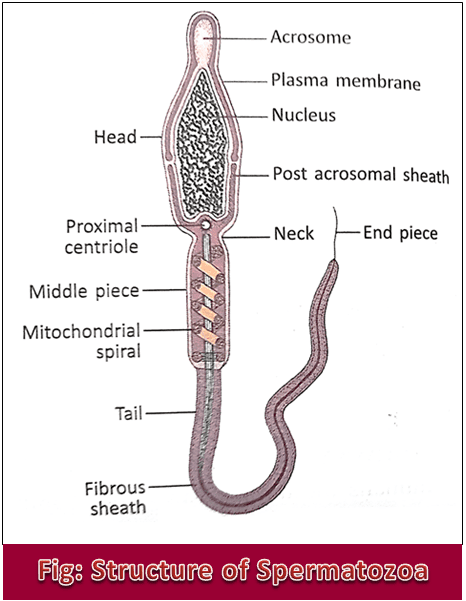Spermatozoa:
Spermatozoa are the male gametes. They are highly specialized in their structures and functions possessing unique features.
Structure of Spermatozoa:
A mature spermatozoa is made of four parts –
1. Head: It is flat oval and made mainly of a nucleus. It is 4-5 µm in length and 2.5-3.5 µm in diameter. Its front part is covered by a cap-like structure called an acrosome which is formed from the Golgi body of the spermatid. Acrosome is filled with enzymes. These enzymes help in the process of fertilization of the ovum.
2. Neck: This part is short and weak. It contains a centriole. From the neck region, an axial fiber made of 11 fibrils extends through the body up to the tail.

3. Body: It is columnar and measures 5-7 µm in length and 1 µm in diameter. Around the axial fiber extended through the body, a double-layered sheath formed from mitochondria remains spirally arranged. The mitochondria provide energy in the form of ATP for the locomotion of the sperm. The head, neck, and body of sperm remain covered by a membrane. This is called the sperm membrane. At the end of the body, there is a ring centriole with an unknown function.
4. Tail: The motile portion of sperm is called the tail or flagellum. The tail portion is divided into 3 parts –
-
i. Middle piece
ii. Principle piece
iii. End piece
It is 45 µm in length and 0.5 µm in diameter. The axial fiber of the tail remains covered by a double-layered fibrous cytoplasmic sheath. The mitochondria synthesize ATP which supplies energy to the motile tail. The end part of the tail is very fine and uncovered. It looks like a cilium and is about 5 µm long.